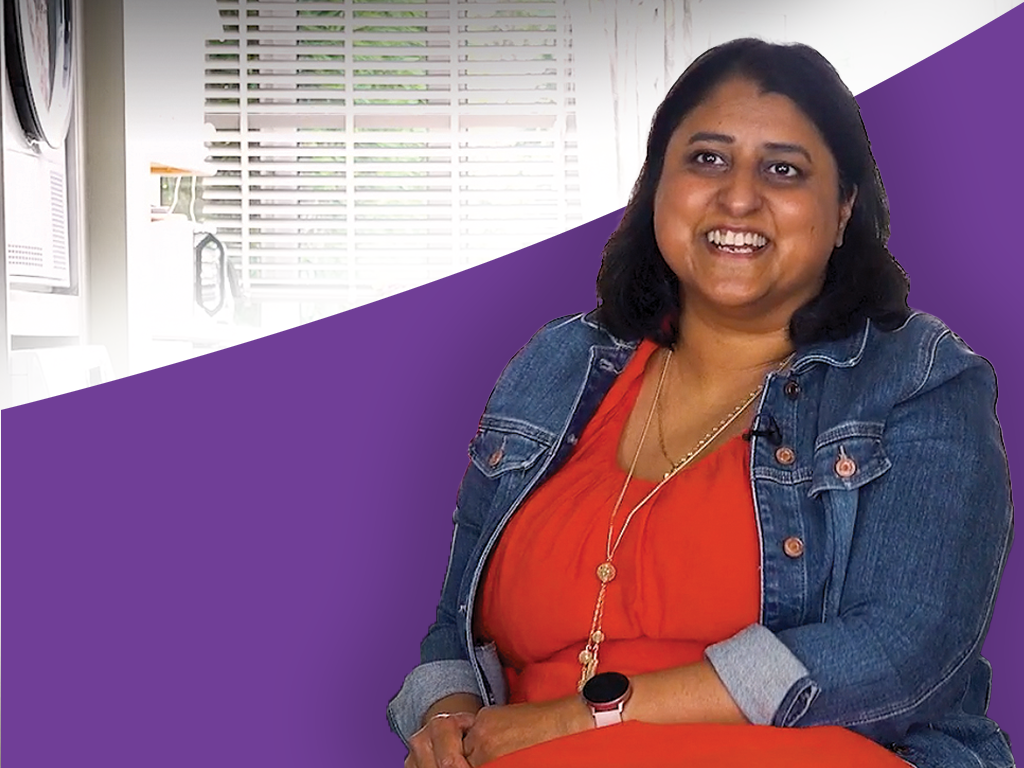Show Menu
Choose Your Location
You are now leaving the Viatris page for a Viatris affiliate site or third party site that is solely responsible for its content, including its compliance with guidelines applicable in certain geographies. Links to Viatris affiliate sites and third party sites are provided as a resource to our visitors and may not be governed by the same regulatory requirements applicable to this site and unaffiliated third party sites are subject to their own terms and data protection notices and practices. Moreover, if their third party site is subject to other country laws, regulatory requirements, data protection requirements or medical practices may differ between countries and the information provided therein may not be suitable for use in your country.

Patient Inspiration
By: Niki Kapsambelis
November 17, 2022
In hindsight, Shazia Khan realizes how lucky she has been. In February 2018, while visiting her parents, she experienced a shortness of breath and a stitch-like pain on her right side that began while she was holding her young niece on her lap.
At first, those symptoms didn’t seem serious. But when she returned home, she went to see her doctor; she couldn’t speak a full sentence without catching her breath, and she had developed a cough and chest pain on her right side.
Her doctor sent her to the hospital for further testing. Later, Shazia – who works for Viatris in the United Kingdom as the Global Portfolio Process Lead – would learn that her medical practice had experience in diagnosing pulmonary embolisms, which are blood clots that block the pulmonary arteries in the lungs, often after traveling from deep veins in the legs or other parts of the body. So even though Shazia lacked some of the telltale symptoms, such as swelling in her legs or a family history that would put her in a typical risk category, the hospital visit would prove to be critical.
The condition can be life threatening, although prompt access to treatment greatly reduces that risk, and proactive steps can help prevent the clots from developing. Each year, one in four people worldwide die from conditions caused by thrombosis, which is the term for clots that block veins or arteries.
In addition to providing solutions to address thrombosis related illnesses, Viatris partners with key medical societies, patient advocacy groups and civic associations to provide recovery support as well as prevention strategies.
Test results at the hospital revealed sobering news for Shazia: she had three clots in her lung, as well as damage to both her lung and heart. She was just 47 years old.
“I was just shocked,” Shazia said. “And then it was just: ‘OK, I have to pull myself together.’ It was a very emotional experience. I think it was just a lot to take in.”
Immediately, her health care providers prescribed a daily regimen of medication designed to cure the thrombotic event and to reduce the risk of recurrence. Shazia also began to implement key lifestyle changes: she quit smoking, lost weight, began walking more and eating healthier foods. The experience inspires her in her work at Viatris: “I’ve been there. And I know those drugs can make a difference in people’s lives,” she said. “I might not think about it directly every day, but I know that I can help and make a difference.”
In addition to medication and lifestyle changes, Shazia also learned to reduce her stress levels: “I have a tendency to push myself a little bit too much without realizing it,” Shazia said. “And my body told me, ‘No, that’s not allowed.’ It was a good wake-up call for me.”
It took her time to accept the gravity of her situation.
“The recovery was really challenging for me on a physical level as well as an emotional level,” Shazia said. “The doctors couldn’t stress enough that I’d had a serious illness … I never thought it could happen to me. What does this mean now? What happens next? Those were the key things that were going through my head.”
A related anxiety attack motivated Shazia to start researching patient support groups, eventually leading her to Thrombosis Ireland. Hearing other people’s experiences aided her own recovery and inspired her to share her own story.
“It taught me a lot about myself,” Shazia said. “The recovery process is challenging, each patient has a different timeline, and it’s not easy. It’s really about the patients and how they are able to manage their health, how they feel and understanding what they are going through.”